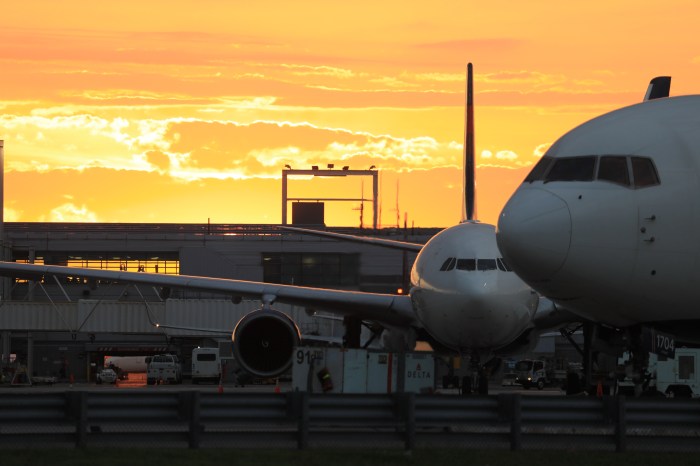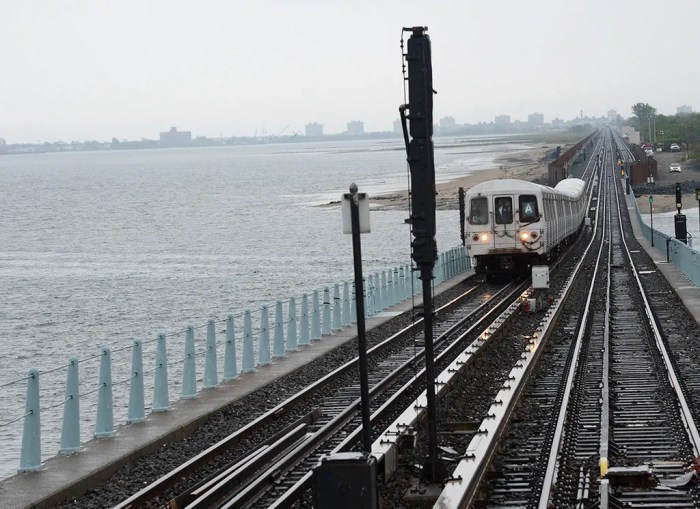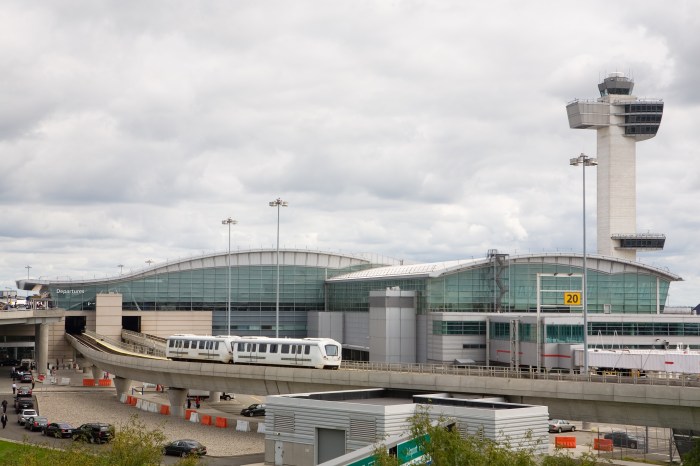By Katy Gagnon
The train horns that frustrate homeowners living alongside the Long Island Rail Road tracks in Little Neck and keep them awake at night may soon be silenced or at the very least be a little quieter.
“I have heard the complaints of our neighbors along the LIRR's right of way loud and clear,” said Helena Williams, the LIRR's president. “Now we are doing something about it.”
The LIRR detailed plans this week for quieter horns and amended regulations that would require engineers to blare horns less often.
The announcement comes almost three years after train horns became a critical quality-of-life issue for some Little Neck residents. A change in federal railroad regulations forced passing trains to toot their horns, disturbing many of those living along the track.
The LIRR plans to quell the blare of train horns with a muffling device that will funnel the horn's sound to the front of the train rather than its sides. Each of the agency's M-7 trains, the majority of the LIRR's fleet, will be equipped with the device.
The project will cost the MTA an estimated $2.7 million and take two years to complete.
An exact start date for the project has yet to be set, said LIRR spokesman Salvatore Arena.
At present muffler prototypes are used on about a dozen M-7 trains, Arena said.
State Sen. Frank Padavan (R-Bellerose), who has actively fought the blaring of train horns in Little Neck, said he was pleased with the steps the LIRR are taking.
“It's good that they've developed this technology,” Padavan said of the new devices.
The LIRR changed one of its own regulations, which mandated that express trains sound horns as they passed stations during morning and evening rush hours. Now approaching trains only have to use their horns if a person is too close to the platform's edge.
The agency also submitted requests to the Federal Railroad Administration to waive two horn-related regulations.
The first would drop the minimum decibel level for horns from 96 to 92. This is needed because the horns' sounds reverberate on buildings near the railroad, which makes them sound louder than they really are, Arena said.
The second would waive the federal regulation forcing trains to sound four blares — two long blasts, one short and one long — as they approach grade crossings, such as the one in Little Neck. The LIRR is asking to return to its old guideline that called for one short blast.
The Federal Railroad Administration has received the requests, Arena said, but has yet to respond.
Reach reporter Katy Gagnon by e-mail at kgagnon@timesledger.com or by phone at 718-229-0300 Ext 174.


































